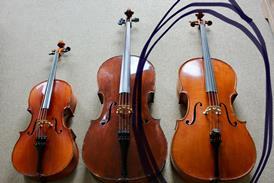- News
- For Subscribers
- Student Hub
- Playing Hub
- Podcast
- Lutherie
- Magazine
- Magazine archive
- Whether you're a player, maker, teacher or enthusiast, you'll find ideas and inspiration from leading artists, teachers and luthiers in our archive which features every issue published since January 2010 - available exclusively to subscribers. View the archive.
- Jobs
- Shop
- Directory
- Contact us
- Subscribe
- Competitions
- Reviews
- Debate
- Artists
- Accessories
Technique: Smooth string-crossings

David Gillham, associate professor of violin at the University of British Colombia and string tutor at Domaine Forget, Quebec, Canada, on how to anticipate and execute string-crossings with maximum fluidity and control
When playing string-crossings, last-minute, jerky movements of the right arm can disrupt legato and détaché passages, and a left-hand finger placed too late can lead to poor coordination with the bow. To overcome these issues, I recommend practising in double-stops to prepare the left hand, and using exercises at the frog, middle of the bow and forearm to activate the right fingers, wrist and arm. String-crossings should be beautiful, smooth and artistic, but many players neglect them in their practice and so produce unnecessary bumps in their sound…
Already subscribed? Please sign in
Subscribe to continue reading…
We’re delighted that you are enjoying our website. For a limited period, you can try an online subscription to The Strad completely free of charge.
* Issues and supplements are available as both print and digital editions. Online subscribers will only receive access to the digital versions.






















